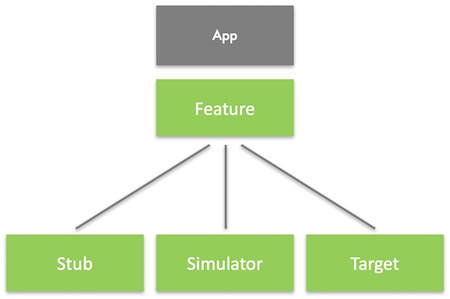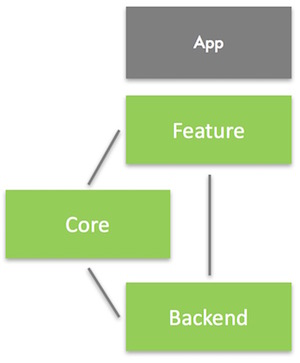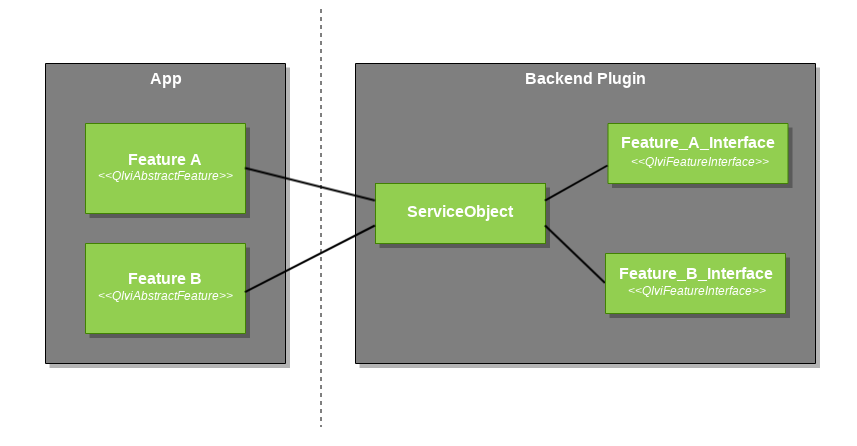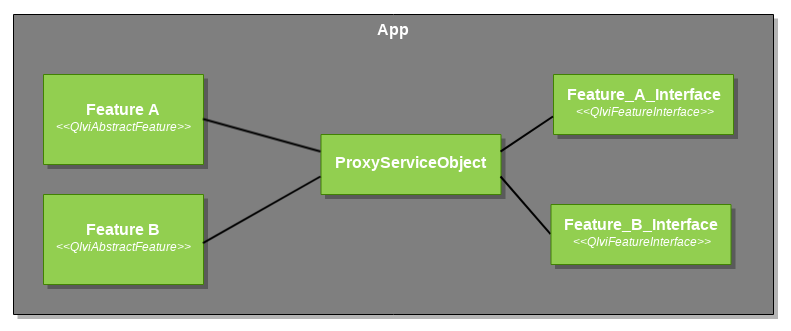Dynamic Backend System
What's a Feature
Modern automotive systems are very complex and are developed in a tight timeframe. Because of that, it often makes sense to reuse parts of previously developed systems. At the same time, the main development is done by independent companies (tier-1). To make it possible to reuse code from previous project, but at the same time also make it possible to use parts the tier-1 can offer, it makes sense to split the APIs into two layers: a frontend and a backend. In QtIvi, the frontend API is called a feature, as usually a specific class is responsible for a specific feature area, e.g. QIviClimateControl, for controlling the climate feature area.
What's a Backend
To function correctly, every feature needs to have a connected backend. This backend needs to implement the corresponding feature backend interface. Only then a valid connection between the feature and its backend can be created.
Usually every feature has exactly one backend interface class, which needs to be implemented by the backend for this feature to work. Every backend interface is derived from QIviFeatureInterface, which provides generic functions and signals needed by every feature, e.g. for error handling.
The backend implementations are grouped together and are implemented inside a Qt plugin. This makes it easy to provide multiple backends at the same time and switch the backend at runtime. Those backend plugins are loaded through qtivicore. A plugin can provide implementations for multiple features. There is no need to create a separate plugin for every feature. QtIvi also distinguishes between two types of backends: production and simulation. While on a production system, you only want to have production backends running. But during the development phase, it might be useful to have a simulation backend available, which can be used for frontend development until the backend services are in an usable state. QtIvi uses a simple naming scheme to identify whether a plugin provides simulation or production backends. Every simulation plugin needs to have either "simulation" or "simulator" in its name. In addition it is also supported to set the "simulation" key in the plugin metadata. This is especially useful for static plugins. Please see How to Create Qt Plugins for more details about Qt's plugin system.

qtivicore - the Glue
The qtivicore module provides all the classes that are needed to glue the parts together. In addition to providing the base classes like QIviAbstractFeature or QIviServiceObject, it also provides the QIviServiceManager, responsible for loading the needed backend plugins.

QIviServiceManager
The QIviServiceManager is the central part of qtivicore, keeping book on all the available backends and their exported interfaces. For this, the manager scans through all available plugins and their accompanying metadata. This gives the QIviServiceManager the ability to only load the plugins, which are actually needed by a Feature in order to reduce the startup time. All these information is collected in the manager in form of a model, which enables the user to pick and choose the plugin he wants to use.
ServiceObjects
To keep the features very flexible and to make it possible to change the backends at runtime, we introduced a concept called ServiceObject. A QIviServiceObject is a handle, which is used by the feature to connect to the correct backend interface. It provides methods to query the available backend interfaces that the ServiceObject is implementing. Plugins are automatically wrapped by ServiceObjects. This makes it possible to share the ServiceObject between multiple features and to explicltly select which backend should be used for your feature instance.

As you can see in the image, the ServiceObject is the handle for a specific plugin. Feature A and Feature B are both using the same ServiceObject, which returns an instance of Feature_A_Interface for Feature A and Feature_B_Interface for Feature B. The Feature classes are derived from QIviAbstractFeature and the backend interfaces from QIviFeatureInterface.
ProxyServiceObjects
In contrast to the normal QIviServiceObject, which represents a handle to a backend plugin, the QIviProxyServiceObject doesn't need a plugin to work. It can be instantiated on the application side and filled with any QIviFeatureInterface derived class. This is for example useful when a backend implementation of a feature should not be done inside a separate plugin, but inside the application code base.

The ProxyServiceObjects are also used for models which are a properties of another feature. See more about this in the Model Documentation.
How a Feature Finds its Backend
Usually every Feature is using the so called auto discovery mode. From QML, you can set the QIviAbstractFeature::discoveryMode property; from the C++ side, this can be started using QIviAbstractFeature::startAutoDiscovery(). This will ask the QIviServiceManager for all the available backends implementing the required interface for your feature. The manager will then choose the first matching backend and will connect the feature to it. QIviAbstractFeature will first ask for production backends and only if none are available, fall back to a simulation backend. This behavior can be controlled using the QIviAbstractFeature::discoveryMode (defaults to QIviAbstractFeature::AutoDiscovery). The resulting backend type can be retrieved via QIviAbstractFeature::discoveryResult. After the feature has successfully loaded a backend, the QIviAbstractFeature::serviceObject property holds the loaded ServiceObject and QIviAbstractFeature::isValid returns true.
Detailed connection order
- A ClimateControl element is created in QML.
- ClimateControl will call QIviAbstractFeature::startAutoDiscovery on its completion.
- QIviAbstractFeature::startAutoDiscovery will ask QIviServiceManager for all backends.
- QIviServiceManager searches for all available plugins and the interfaces they are implementing (this happens only once).
- QIviAbstractFeature will accept the first QIviServiceObject and connect to the corresponding interface.
- The ClimateControl element is ready to be used.
Manual Assignment
If a feature does not want not use the auto discovery mechanism, it can simply set the discoveryMode to QIviAbstractFeature::NoAutoDiscovery. After that, the feature won't search for a backend itself anymore, so the user needs to assign a ServiceObject manually.
DiscoveryModels
For features like QIviClimateControl the auto discovery is fitting, as there is usually a 1:1 mapping between a feature and a backend providing the implementation for the feature. For more generic interfaces like a media player, this might not be sufficient: you could control a built-in media player backend with this, but you might also want to control the media player running on your mobile phone over bluetooth. For this to work, you first would need to discovery the available devices and then pass the ServiceObject of the selected device to the media player interface. The discovery of the available mobile phones can be done using a DiscoveryModel. This provides you with a ServiceObject for every device found. The concept of a discovery model is not limited to mobile phones, it can be used for all backends that are not hard-wired to the system, like internet services or controlling multiple rearseat systems.
© 2020 The Qt Company Ltd. Documentation contributions included herein are the copyrights of their respective owners. The documentation provided herein is licensed under the terms of the GNU Free Documentation License version 1.3 as published by the Free Software Foundation. Qt and respective logos are trademarks of The Qt Company Ltd. in Finland and/or other countries worldwide. All other trademarks are property of their respective owners.
